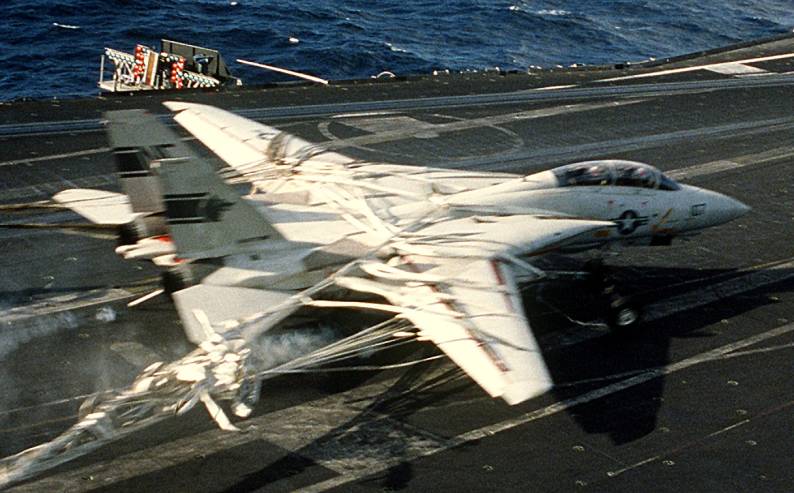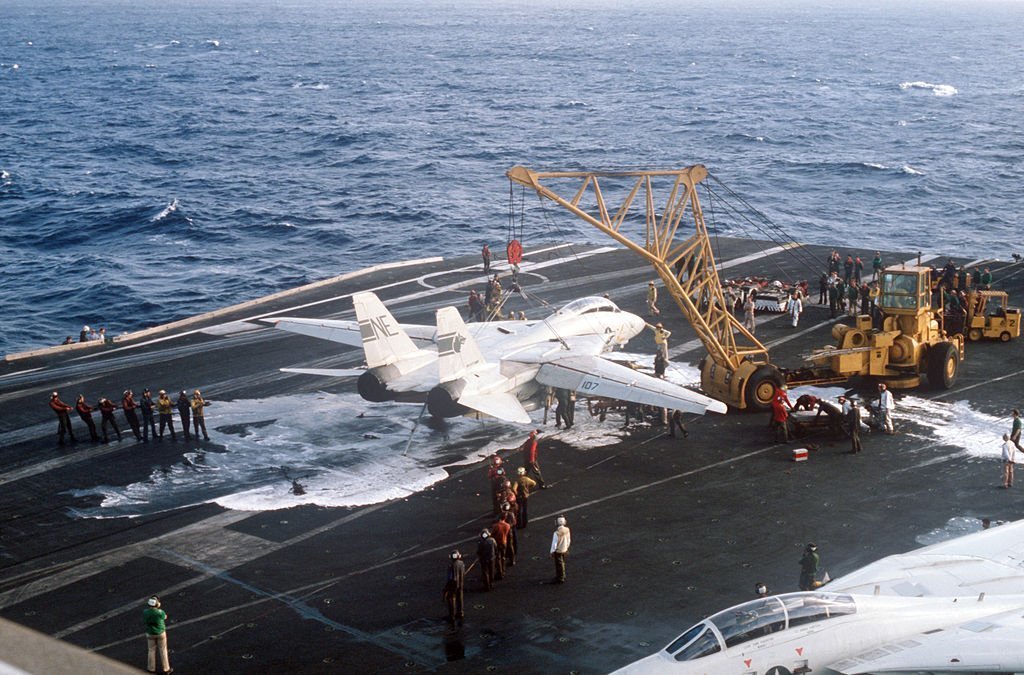The recovery was successful; no injuries were sustained during the F-14A Tomcat emergency landing.
Taken on Jun. 30, 1984, the photo sequence in this post shows: LEFT – A Grumman F-14A Tomcat fighter jet from VF-1 Wolfpack entering a barricade during an emergency landing aboard the conventionally-powered U.S. Navy aircraft carrier USS Kitty Hawk (CV-63). CENTER – The barricade restrains the aircraft as it comes aboard the carrier. The recovery was successful; no injuries were sustained during the landing. RIGHT – Crew members use an NP-50 crane to remove the damaged aircraft from the flight deck after its emergency barricade landing.

VF-1, “Wolfpack” was established on Oct. 14, 1972, at Naval Air Station (NAS) Miramar, at the same time as VF-2, these units were the first F-14 fighter squadrons. VF-1 received the first F-14As on Jul. 1, 1973. The squadron’s insignia was a red wolf’s head designed by Grumman Commercial Artist, George M. Kehew himself a WWII combat veteran. The Squadron Insignia is registered in the Library of Congress.

The first cruise came in September 1974 onboard USS Enterprise (CVN-65). The end of the cruise saw the first Tomcat’s combat debut, as VF-1 and VF-2 flew cover over Saigon for evacuation of US personnel in April 1975 as part of Operation Frequent Wind.

In September 1980, VF-1 and VF-2 changed carrier air wings, moved to USS Ranger (CV-61), and flew various cruises with her until they shifted carriers once again in 1984 to USS Kitty Hawk. They stayed with Kitty Hawk for one cruise. In 1984, VF-1 had achieved an impressive 22,000 flight hours without a single accident. By 1986, they returned to the Ranger and were with the carrier during Operation Desert Storm where VF-1 scored the only F-14 air-to-air kill during the war, an Iraqi Mil Mi-8 helicopter was downed by an AIM-9 Sidewinder.
The Ranger’s last foreign port of entry was Sydney Australia in January of 1993 after having spent New Year’s Eve 1992 in Melbourne Australia.
The Ranger was decommissioned in 1993 and VF-1 was left without a carrier. They operated out of NAS Miramar until VF-1 itself was disestablished on Oct. 1, 1993.
U.S. Navy photos by PH3 Hall. From the U.S. National Archives and Records Administration (NARA).

